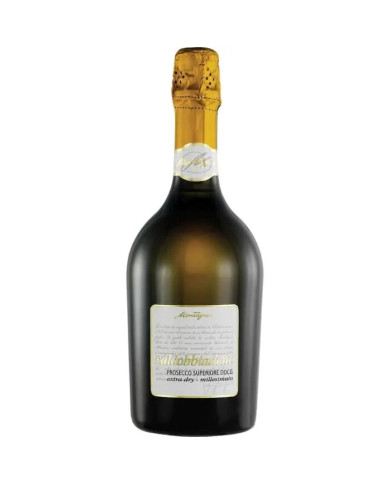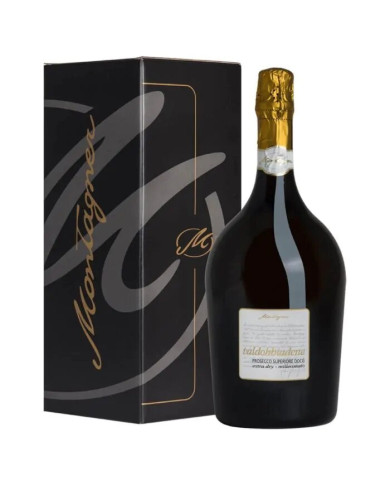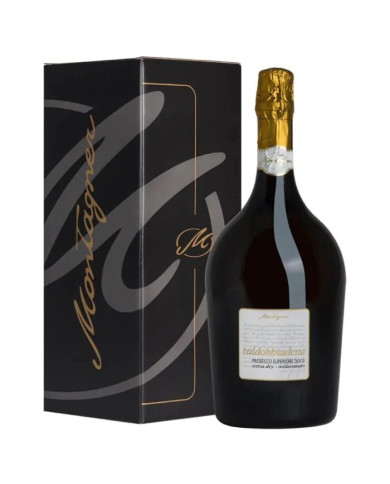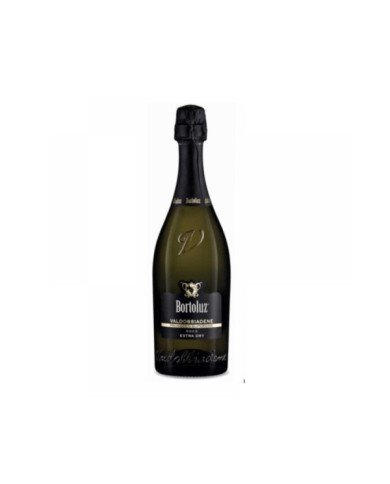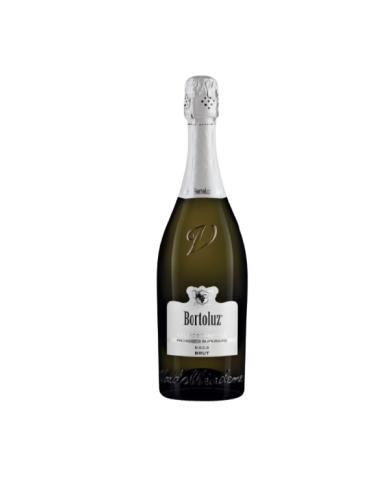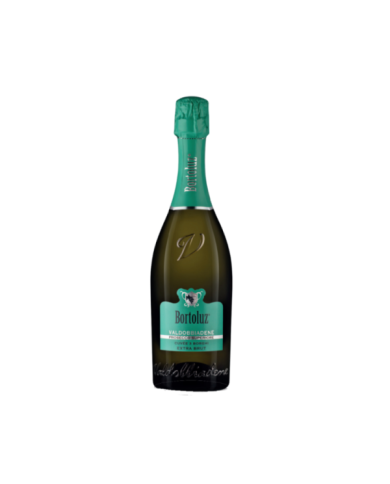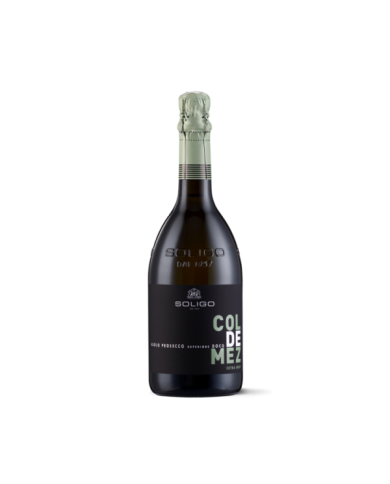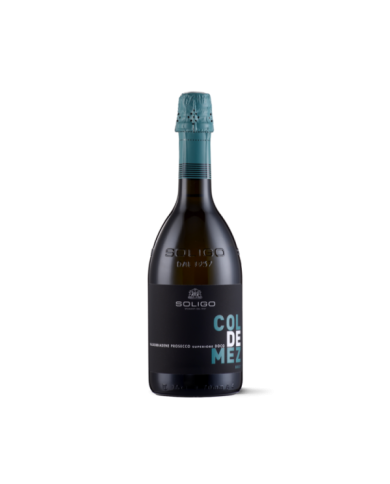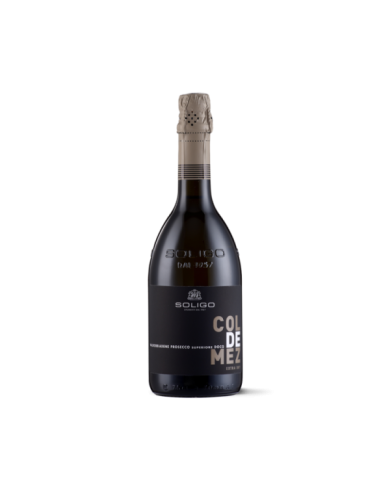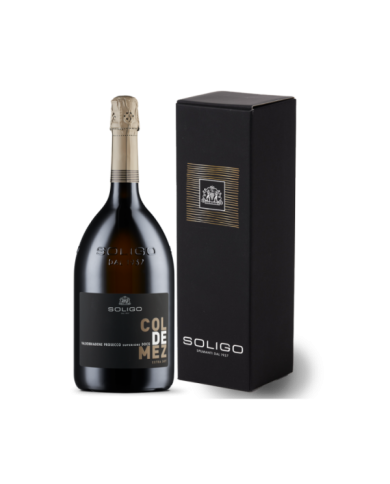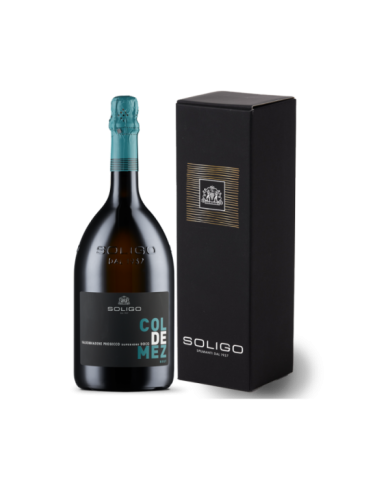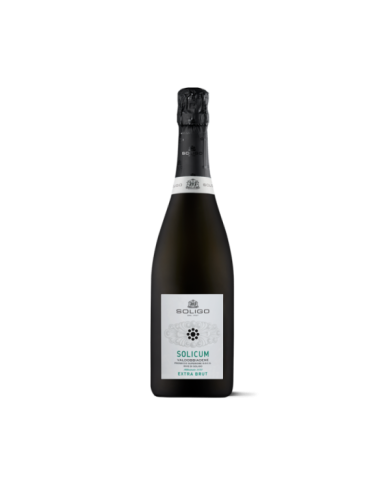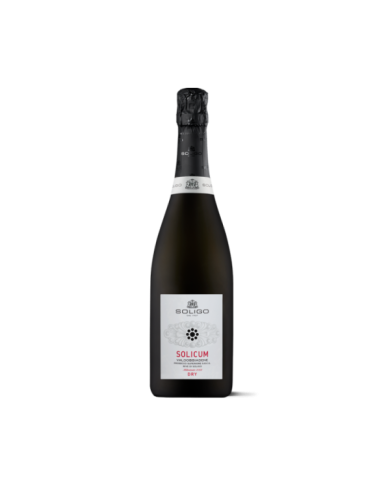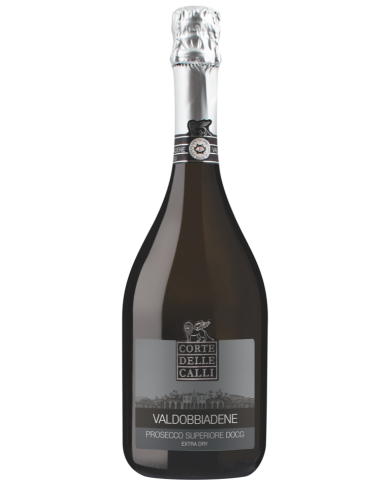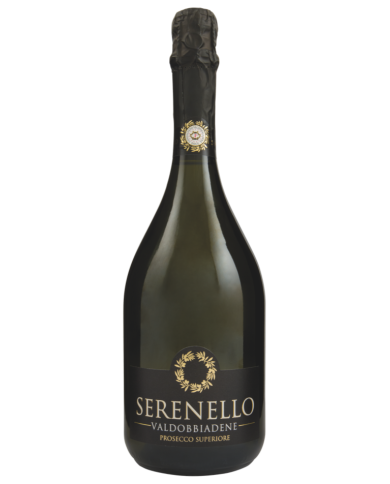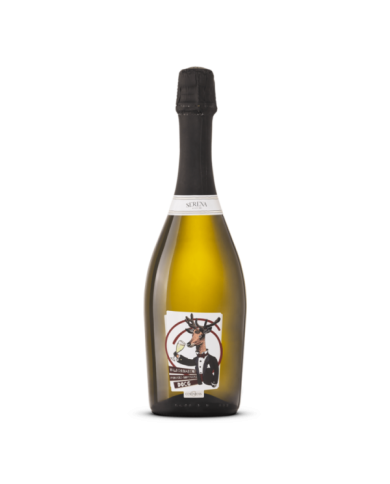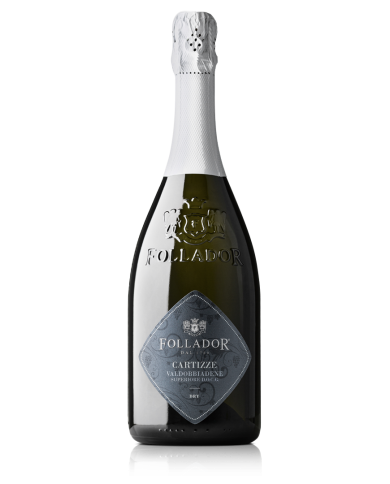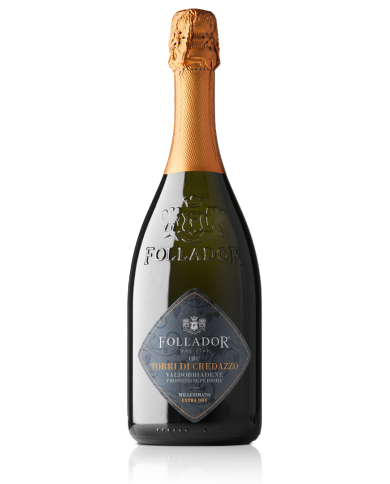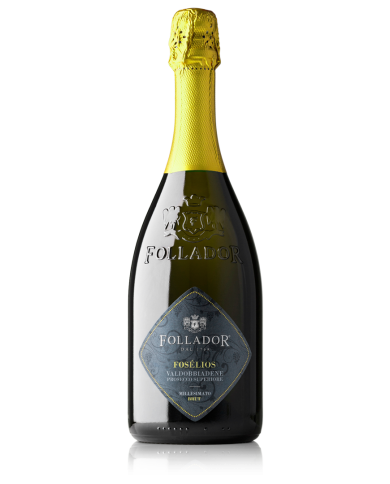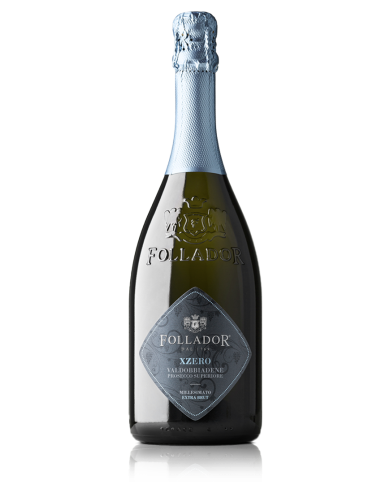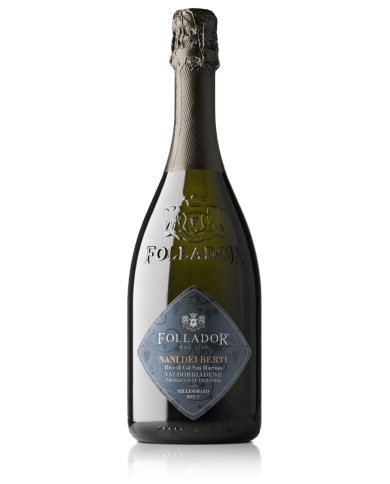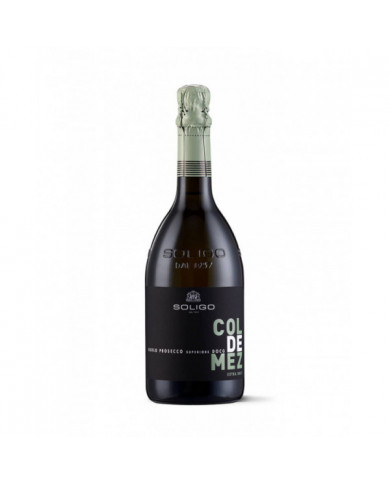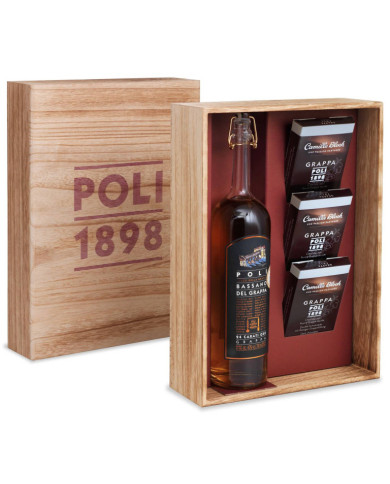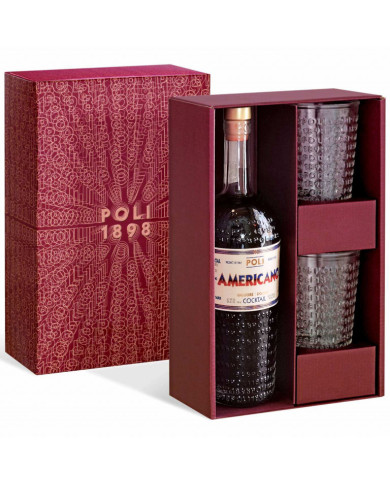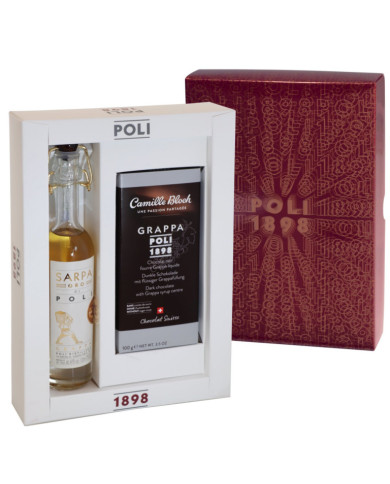Prosecco, in the sparkling version, is a wine capable of teasing and satisfying even the most demanding palates. It has a brilliant straw yellow color with a fine and persistent perlage. The bouquet is complex with hints of rose, jasmine, wisteria and acacia flowers. The fruity notes are of banana apple and pineapple, with mineral nuances. Good freshness, particularly sapid and excellent persistence.
NANI DEI BERTI - Banks of Col San Martino: A tribute to the energy and initiative of Giovanni Follador, father of Gianfranco, so nicknamed. Refined sparkling wine of noble quality, very fine perlage in a splendid combination of bouquet and flavours. An excellent Superiore with a pale straw yellow color, with typical greenish reflections. Lively and very fine perlage with an intense bouquet of citrus, almond and acacia flowers. Excellent balance of acidity and fragrance, well structured with a dry finish. Important wine, good aperitif. Its sapidity and balanced structure make it suitable for light first and second courses, excellent with tasty cheeses.
Prosecco Valdobbiadene Superiore DOCG Col De Mez is produced with Glera grapes ripened on the vineyards of the historic hill called Col de Mez. The harvest takes place in September and is strictly manual. It is also called the "heroic harvest" precisely because picking the grapes in these rows is not easy at all. The slopes are steep, the hills craggy, each operation requires attention and experience. In the Extra Dry version, it goes perfectly with dishes with a delicate flavor and with any fish-based dish.
This sparkling wine comes from the golden bunches of Glera grapes that ripen in the vineyards located in the Montello and Colli Asolani area. This is an area suited to the cultivation of vines. The optimal pedoclimatic environment gives the bunches a high quality level. The grapes are harvested exclusively by hand, generally in the first days of September and immediately taken to the cellar. Here they are pressed and the must fermented in stainless steel containers. This is followed by the sparkling process in an autoclave according to the Charmat method. In the Extra Brut version, fresh and savory, it receives the favorable opinions of the most expert tasters.
Complete Guide to Valdobbiadene Prosecco Superiore DOCG: History, Characteristics, and Tasting Tips
Welcome to this exclusive journey through the history, production, and unique characteristics of the Denomination Valdobbiadene Prosecco Superiore, one of the most appreciated sparkling wines in Italy and the world.
The History of Prosecco
Origin of Prosecco
Prosecco has ancient origins, dating back to Roman times. Its name comes from the Slovenian village of Prosek, near Trieste, known for the production of white wines since the 1300s.
The First Producers
In the 19th century, Antonio Carpene was one of the first producers to use the Charmat method to produce Prosecco as we know it today.
Denomination Valdobbiadene Prosecco Superiore
Definition
The Denomination Valdobbiadene Prosecco Superiore is a DOCG (Denomination of Controlled and Guaranteed Origin) that indicates wines produced in a specific production area located between Conegliano and Valdobbiadene, in the heart of the Venetian hills.
Production Method
The Charmat Method
The Charmat or Martinotti method involves a second fermentation in stainless steel autoclaves for foaming. It is the most used method for the production of Prosecco.
Foaming
During foaming, the wine is mixed with yeasts and sugars and left to ferment in closed autoclaves for a period from one to three months.
Maturation
After fermentation, the wine matures for a variable period of time before being filtered and bottled.
The Classic Method
Some producers also use the classic method, with a second fermentation in the bottle, similar to that used for Champagne.
Wine Characteristics
Taste
The Valdobbiadene Prosecco Superiore has a delicate, fruity taste, with notes of green apple, pear, white peach, citrus and acacia flowers.
Color
The color is light straw, with greenish reflections and persistent foam.
Fragrance
The scent is characteristic, with notes of white fruit, flowers and a light yeast feel.
Food-Wine Pairings
Classic Pairings
Prosecco Superiore is perfect for accompanying appetizers, seafood, sushi, seafood and fresh cheeses.
Creative Pairings
Why not try it with a tuna carpaccio or mushroom risotto?
Preservation and Service
Service Temperature
Prosecco Superiore should be served cold, at a temperature between 6 and 8 degrees.
Preservation
After opening, Prosecco Superiore can be kept in the refrigerator for 1-2 days with a pressure cap.
The Denomination Valdobbiadene Prosecco Superiore represents the excellence of Italian Prosecco, thanks to its unique characteristics, its careful production, and its versatility in pairing with food. What are you waiting for? Discover the charm and elegance of this sparkling wine and let yourself be transported to the heart of the Venetian hills.
Frequently Asked Questions
What does DOCG mean?
DOCG stands for Denomination of Controlled and Guaranteed Origin, the highest level of quality for Italian wines.
What are the differences between Prosecco DOC and Prosecco Superiore DOCG?
Prosecco DOC can be produced in a much wider area than Prosecco Superiore DOCG, which is only produced in the hills between Conegliano and Valdobbiadene.
Can I pair Prosecco Superiore with meat?
Yes, Prosecco Superiore can be paired with white meats or seafood.
What temperature should I serve Prosecco Superiore at?
Prosecco Superiore should be served cold, at a temperature between 6 and 8 degrees.
How long can I keep Prosecco Superiore after opening?
After opening, Prosecco Superiore can be kept in the refrigerator for 1-2 days with a pressure cap.

